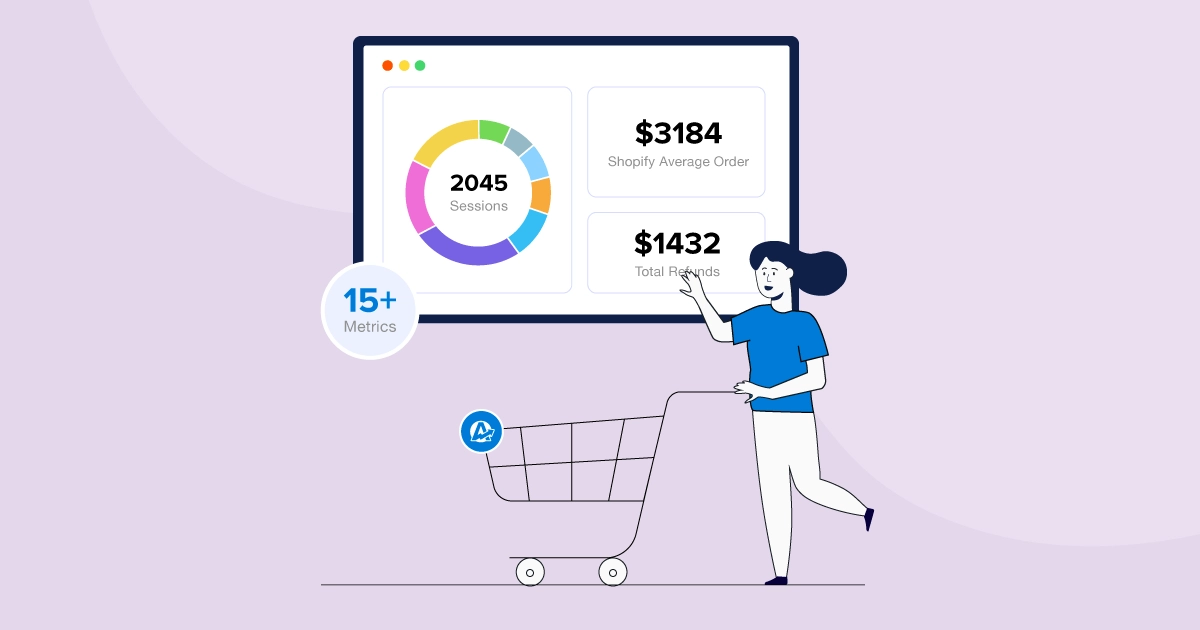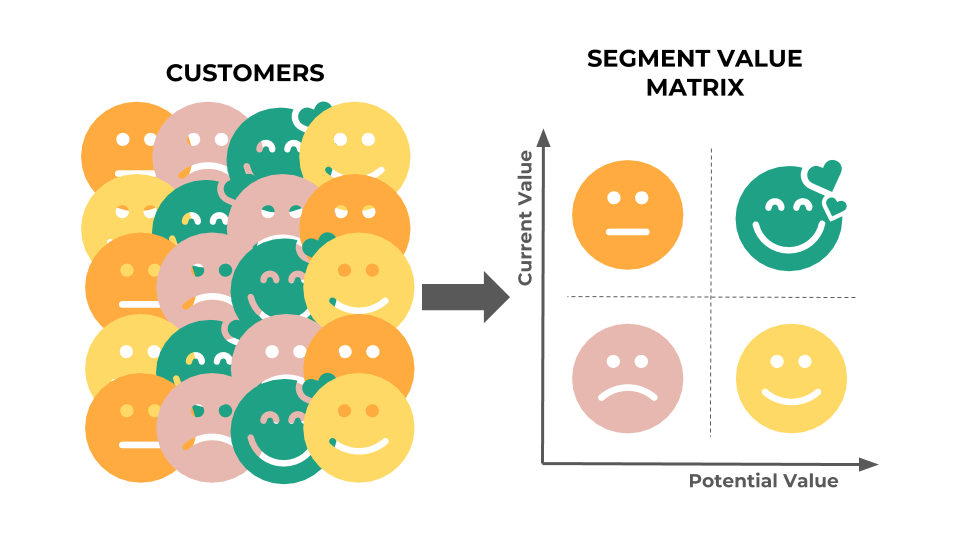6 Ways a 360-Degree View of a Customer Makes Your Business Superior
What if you had every piece of data about your customers all in one place? Sounds like a relief, right? Having unified data in the world of e-commerce and online marketing is called having a 360-degree view of your customer.
Having everything in a single location means there are no blind spots when you or your customer service or sales representatives interact with a customer.
Seeing the different angles of your customer and their interactions with your brand allows you to improve your relationship with them and turn it into a long-term fruitful experience.
In this article, we’re going to focus on what a 360-degree customer view is and how it can benefit your business today.
What is a 360-degree view of a customer?
With the growing rise of e-commerce and online interaction, engagement, buying and selling, and everything in-between, customers are offering tons of data and touch points.
But all of this data is scattered from social media platforms, to mobile apps, to customer support, to online communities and more.
This makes it harder for e-commerce stores to gather all of this data and use it to provide better experiences for their customers.
But what if there was a tool that could take all of this scattered data and combine it in a single location?
This tool would allow businesses, whether B2B or B2C, to get a 360-degree view of their customers, allowing them to understand them better and provide better experiences for them.

To create a 360-degree customer experience, companies would have to rely on social media listening tools, to see if their customers are talking about them – and whether it’s positive or negative.
You’d also need to rely on predictive analytics to understand what your customers are searching for along with customer relationship management (CRM) tools and marketing automation software.
Your business’s relationship with a customer begins from the moment they first speak to you, ask you a question, call your customer service team, engage with you on social media, or visit your website.
Depending on the type of customers, this relationship can span months and years.
A 360-degree view means a full-circle view of your customer and every interaction they’ve had with your business from the moment they stepped foot in your online store or interacted with you.
This includes your customers’ interactions during phone calls, online chats, their engagement in your marketing campaigns, downloading ebooks, and anything in between.
That’s in addition to information about them such as their name, address, email, their favorite products, the apps they use, and lots more.
But without this wide-ranging view, aggregating all this data would be a nearly impossible feat.
The big 360 customer view opportunity
Data by Gartner shows that fewer than 10% of companies have or implement a 360-degree view of their customers.
But that’s not all, only 5% manage to use the 360-degree customer view to enhance and grow their busview of a customer inesses.
What this means is, there’s lots of opportunity to drive more business when you have a better understanding of your customers.
Not only that, but most of your competitors aren’t even considering this opportunity or know how to use it.
Benefits of the 360-degree view of a customer
Having unified data for your customers comes with various benefits. But first let’s look at the effect scattered data has on teams within an organization and customers.
A Forrester Research survey found that 42% of surveyed customer service agents struggled to resolve customer issues efficiently because they lacked complete and easily accessible customer information.
On the other hand, 45% of customers surveyed said they would often abandon a transaction or purchase due to a lack of prompt customer support.

This shows that companies aren’t the only ones struggling don’t know enough of about their customers.
The customers themselves were put off and abandoned transactions when they had to go through long calls or processes.
Here are 6 reasons you should be considering a 360-view CRM or tool for your business:
1. Connected data for all
Scattered data can result in lost sales, frustrated customer service and sales agents, and even worse unhappy customers.
Having data that’s complete and connected from various platforms, on the other hand, can boost your sales and enhance your customers’ experience.
2. Data is available all the time
In addition to connecting all of your data, a 360 view CRM means the data is available at all times. Regardless of who is answering the phone or responding via a messenger chat.
If your customer service or sales representatives leave, change accounts, or get promoted, the data is available for the next person responding to your customer.
This allows you to provide a seamless experience. Customers won’t notice the change but will value your business for its smooth and speedy response to their queries.
3. Better understanding of your customer
Having a 360-degree view of your customer means you can see how they react to your brand across various touch points.
Whether it’s your social media channels, your website, mobile app, or even your physical store, keep up with your customers everywhere.
Use this information to improve your understanding of your customer by segmenting them across your ad campaigns.
The 360-degree customer view can help you create your customer segmentation strategy, which allows your better meet your customer’s needs, enhance their experience, and upsell or cross-sell to them.
4. Longer and more meaningful customer relationships
When you better understand your customer, you’ll be able to meet their expectations and fulfill their needs. This will help you lengthen your relationship with that customer.
When talking about the length of a customer’s relationship with a business, it’s important to mention customer lifetime value (CLV).
CLV is a metric that measures the value of a customer’s relationship with your store.
For example, your customer Sara’s CLV is a year, whereas customer Jennifer’s CLV is 4 years. This means that Jennifer has a larger CLV compared to Sara and is a more valuable customer to your business.
By focusing on your customers and their experiences, you can turn more customers like Sara into customers like Jennifer whose relationship with your business spans years.

5. Better cross-department collaboration
One of the major benefits of having a 360-degree view of your customer is improving collaboration across your company or Store. Particularly among your sales, marketing, and customer service departments.
You see, with all the data in a single place, the customer support team can flag upsells and cross-sells to sales and marketing.
Similarly, if customers are struggling with a certain product or feature, customer support can flag this to your product or development team and later follow up with customers to ensure a smooth experience.
With unified data, agents can easily identify which customer has been struggling with which issue and promptly support them.
According to an Aberdeen Group report, aligning your sales and marketing teams, you can:
- Increase revenue by 32%
- Grow customer retention by 36%
- Increase your win rates by 38%
This means: a 360-degree view allows each member of your team to be on the same page as your customer.
6. More personalization and loyalty
Personalization is an ever-growing desire amongst shoppers.
Data by SmartHQ shows that 72% of consumers surveyed would “only engage with personalized marketing messages.”
In addition, 80% of frequent shoppers said they would only shop with brands who offer a personalized experience.
“When executed well, [personalized] experiences enable businesses not only to differentiate themselves but also to gain a sustainable competitive advantage,” notes McKinsey and Company.
Similarly, Forrester notes that “hyperpersonalization underpins true one-to-one interactions.
Customers now expect personalization and engagement “tailored to their history, preferences, context, and intent,” Forrester adds, indicating that such tailored experiences result in “highly personal content, offers, journeys, and connections with frontline resources.”
Having a 360-degree view of a customer helps you understand your customers so you can provide better personalized experiences for them. This, in turn, translates to stronger customer relationships, enhances loyalty, and drives conversions.
Conclusion
The 360-degree view of a customer can help businesses in various ways.
From unifying their data across touch points and various channels to enhancing awareness about customer needs and improving the brand’s relationship with the customer.
In addition, companies that connect all their data and analytics can unlock greater business value and opportunities and offer customer-centric experiences that drive customer loyalty and retention.
Despite these benefits, few businesses are using the 360-degree customer view. The reasons vary from being unfamiliar with the idea or being used to doing things a certain way.
The bottom line is: E-commerce businesses need to look at more ways to make use of the data that’s available to them.
Want to know more about the 360-degree view of a customer and how it can help your business? Get in touch with the Convertedin team.


